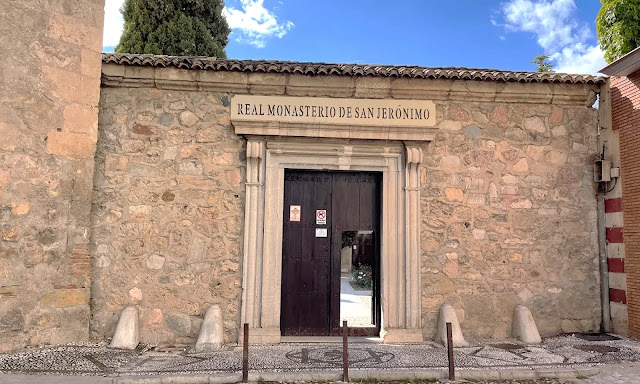Monasterio de San Jerónimo, Granada
Granada is a city filled with remarkable historical and architectural wonders, and one of its most captivating gems is the Monasterio de San Jerónimo. This monastery, located in the heart of the city, stands as a testament to Spain’s rich Renaissance heritage. Built in the 16th century, it showcases exquisite craftsmanship, grand religious significance, and a fascinating past that intertwines with Spain’s most prominent historical figures. Walking through its halls and courtyards, visitors are transported back to an era where art, faith, and power were deeply connected.
Beyond its historical importance, Monasterio de San Jerónimo boasts an architectural splendor that leaves visitors in awe. From its magnificent Renaissance facade to the breathtaking gold-adorned altar inside, every inch of this monastery tells a story of devotion and artistic mastery. For history enthusiasts, art lovers, and travelers seeking to uncover Granada’s lesser-known treasures, this monastery is an unmissable destination.
History of the Monastery of San Jerónimo
The construction of Monasterio de San Jerónimo began in 1504 under the orders of Queen Isabella I of Castile. It was originally designed as part of a larger monastic complex for the Hieronymite order, a Catholic monastic movement known for its scholarly pursuits and religious dedication. The monastery played a crucial role in the Christianization of Granada after the Reconquista, serving as both a religious sanctuary and a center of learning.
Throughout the centuries, the monastery witnessed various historical events, including the Napoleonic invasion of Spain in the early 19th century. French forces occupied and looted the monastery, leading to significant damage. Despite these hardships, extensive restorations have preserved its grandeur, making it one of the finest examples of Spanish Renaissance architecture today.
Magnificent Architecture
Monasterio de San Jerónimo is a masterpiece of Renaissance architecture, with influences from both Italian and Spanish design. The exterior features a symmetrical facade adorned with intricate carvings and classical columns, reflecting the Renaissance ideals of balance and harmony. The main cloister, a central courtyard surrounded by elegant archways, provides a serene space that embodies the monastery’s spiritual essence.
Inside, the monastery’s church is a visual marvel. The high, vaulted ceilings and meticulously designed frescoes lead the eye toward the main altarpiece, which is considered one of the most stunning Baroque works in Spain. Covered in gold leaf and featuring an elaborate depiction of religious scenes, the altar is a breathtaking example of the fusion between Renaissance structure and Baroque embellishment.
Tomb of Gonzalo Fernández de Córdoba
One of the monastery’s most significant historical elements is the tomb of Gonzalo Fernández de Córdoba , a revered Spanish military leader. Known as "El Gran Capitán," he played a pivotal role in the conquest of Granada and later led Spanish forces to victory in the Italian Wars. His military strategies and leadership helped establish Spain as a dominant power in Europe during the late 15th and early 16th centuries.
Fernández de Córdoba’s tomb is located inside the monastery’s church, near the grand altar. His final resting place is adorned with intricate carvings and inscriptions that celebrate his military achievements. The presence of his tomb within this sacred space reflects his close ties to the Catholic monarchy and his enduring legacy in Spanish history.
Interior Beauty
The interior of Monasterio de San Jerónimo is a stunning showcase of Spanish Renaissance and Baroque art. The ceilings and walls are adorned with vibrant frescoes depicting biblical stories, saints, and historical events. These paintings, created by some of the most skilled artists of the time, add depth and grandeur to the already majestic space.
One of the highlights is the gold-plated altarpiece, a dazzling centerpiece that dominates the church’s interior. The intricate woodwork, covered in shimmering gold leaf, represents the artistic and religious devotion of the period. Visitors often find themselves mesmerized by the level of detail in the statues, paintings, and sculptural elements that bring the monastery to life.
Visit the Monastery of San Jeronimo
For the best experience, visiting in the morning allows guests to appreciate the monastery’s serene atmosphere without large crowds. Photography is permitted in most areas, but flash photography is discouraged to preserve the delicate artworks. Whether you are a history enthusiast or simply looking for a quiet retreat in Granada, this monastery offers a profound and enriching experience.
Monasterio de San Jerónimo is more than just an architectural masterpiece; it is a symbol of Spain’s enduring artistic and religious heritage. Visiting this remarkable site provides a glimpse into the past, revealing the stories of faith, power, and artistic brilliance that shaped Granada. While the Alhambra often takes center stage, this monastery stands as a hidden gem that offers a truly Unforgettable Experiences in Granada.
You can also explore various religious sites in Granada that are rich in history and architectural beauty. Mezquita Mayor de Granada offers a serene spiritual atmosphere with stunning Islamic design, providing a peaceful retreat in the heart of the bustling city. Meanwhile, the Catedral de Granada stands majestically with captivating Renaissance architecture, adorned with intricate carvings and high ceilings that reflect the grandeur of the past. Equally fascinating, the Cartuja Monastery showcases a blend of Baroque art and a sacred ambiance, featuring an interior filled with paintings and gold-plated carvings that delight the eyes. Visiting these places not only provides a spiritual experience but also enriches your understanding of Granada’s history and culture.







